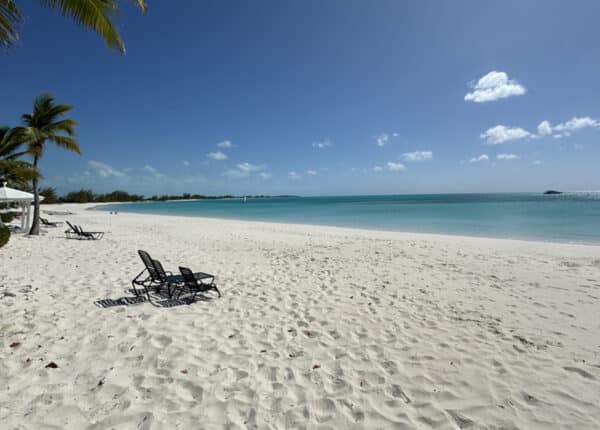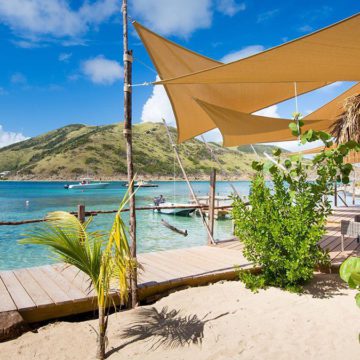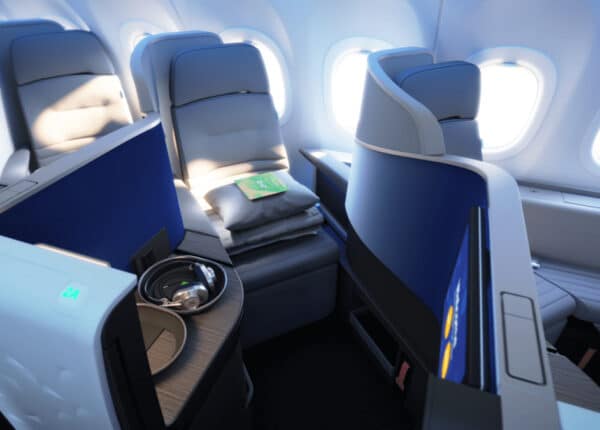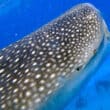Above: off the coast of Belize (Photo: Sébastien Perrot-Minnot)
By Sébastien Perrot-Minnot, PhD
CJ Contributor
It is in the course of the last glaciation, which affected the planet for more than 100,000 years, and finished about 11,000 years ago, that our species entered America.
The archaeological, genetic and paleoenvironmental data show that the first inhabitants of the American continent came from Siberia, taking advantage of the land bridge that had been created between north east Asia and Alaska, by the drop in sea level. However, the dates of this migration and of the occupation of many American archaeological sites from the glacial era are subject to animated debates.
If we stick to the datings that have been widely accepted by the scientific community, the oldest remnants of human activity are between 15,000 and 16,000 years in age; they have been recovered in the United States.
During the Paleoindian period, which ends at around 7500 BC, humans explored and colonized the New World, from North to South America, and from the Pacific to the Atlantic.
In Central America, the current archaeological record goes back to some 13,000 years. Yet the human presence in this region is necessarily anterior, because it is attested 14,600 years ago, in Chile.
So the Paleoindian societies were highly mobile, moving on the earth as well as on the sea (along the coasts). Their material legacy, which includes stone, bone, ivory and wooden works, is indicative of groups with a family, clan or tribal organization, living by hunting, fishing and gathering, but devoting themselves to artistic and ritual activities too.
The cultural diversity of these groups reflects, especially, in admirably trimmed projectile points made out of stone.
Paleoindian (Clovis) point from August Pine Ridge (Belize), exhibited at the Museum of Belize. Length: 5.16 cm. Photo: Sébastien Perrot-Minnot.
In the Antilles (Caribbean), to date, a single Paleoindian object has been found: a projectile point, collected from the surface, in Trinidad.
Yet if we only consider the archaeologically excavated contexts, the first occupations of the island belongs to the Archaic period, which follows the Paleoindian one; more precisely, they have been dated between 6000 and 5000 BC.
Trinidad was then joined to the South American continent, and nothing suggests that its inhabitants of the time navigated to the islands located to the north.
In the rest of the Antilles, the oldest remains have been uncovered in Cuba, Puerto Rico and Haiti, and dated between 5500 and 4500 BC.
They have been linked to a heterogeneous tradition called “Casimiran”, which flourished in the Greater Antilles and the north of the Lesser Antilles, until around 2000 BC.
Archaic artifacts from Haiti (A, B) and Cuba (C-F), made from macroblades. Source: Samuel M. Wilson, Harry B. Iceland and Thomas R. Hester, “Connections between Yucatan and the Caribbean”, Latin American Antiquity, vol. 9, n° 4, 1998.
The origins of this tradition are discussed, but according to the best argued hypothesis, they could be situated in Belize. Indeed, the most characteristic object of the Casimiran industry has also been found in archaic sites of this country: it is the macroblade, a kind of stone blade more than 20 cm long, which has not been reported elsewhere, among the archaic contexts of Central and South America.
The analogies concern the shape but also the manufacturing techniques, the frequency and the use of the artifacts. In certain cases, the macroblades have been reworked in order to get pointed tools, which allow to make further comparisons, between the Antilles and Belize.
Yet these matches should not conceal significant dissimilarities. We note, thus, that the archaic projectile points from Belize have no equivalent in the Antillean archipelago.
Archaic macroblades from Belize. Photo: courtesy of the Colha Project.
How can we interpret these data?
In Central America, the Archaic period is characterized by a strong demographic growth, a greater cultural diversity and an intensification of the exploitation of the natural environments, whereas the rising sea level has reduced the coastal territories. We can suppose that this situation has been conducive to a development of conflicts.
The social pressure could have pushed groups to venture into the Caribbean Sea, in search of new horizons.
From northern Central America, it is not possible to make out Cuba, but the first explorers of the island could have surmised its presence gazing at the migrations of the birds or the movements of the clouds.
Before reaching the Cuban coast, they had to undertake a three or four-day journey by canoe, facing the strong currents that go through the Yucatan Channel.
Finally, they discovered a land whose resources were certainly less varied than those of the mainland, but nonetheless generous.
On this subject, the material available in the Antilles and the adaptation to new environments can hardly explain the abandonment of the projectile point, and the transformations of the lithic industry.
These evolutions would rather reveal social and ideological ruptures, associated with a greater individual freedom, and the assertion of new identities.
Sébastien Perrot-Minnot earned his PhD in archaeology. He is a researcher associated with the University of the Antilles in Martinique.









